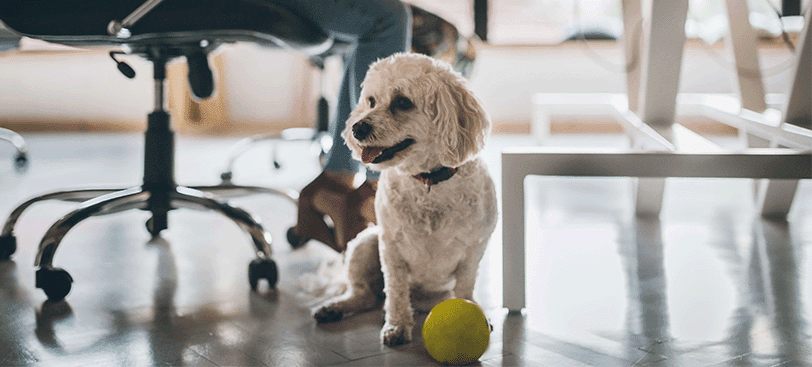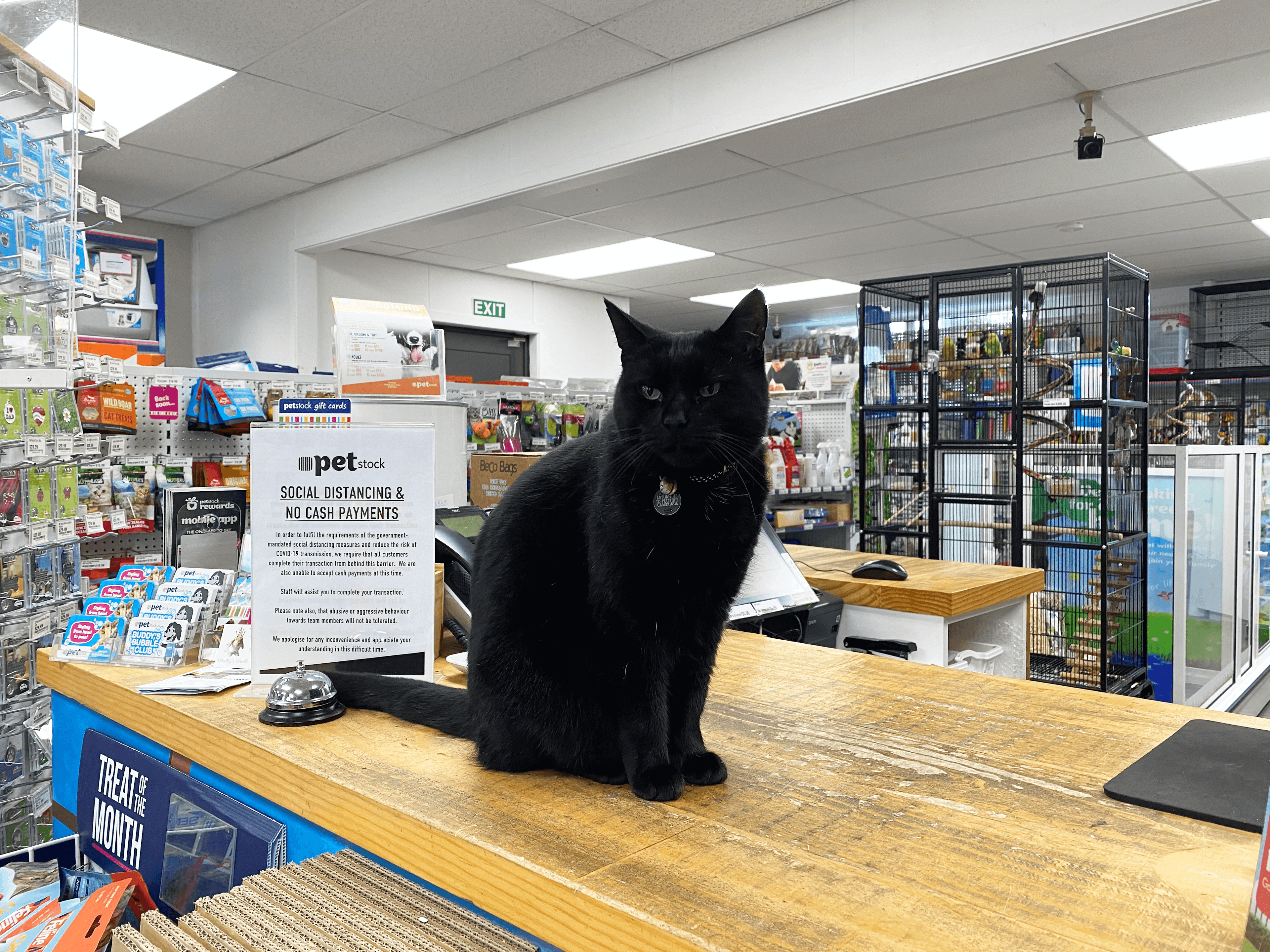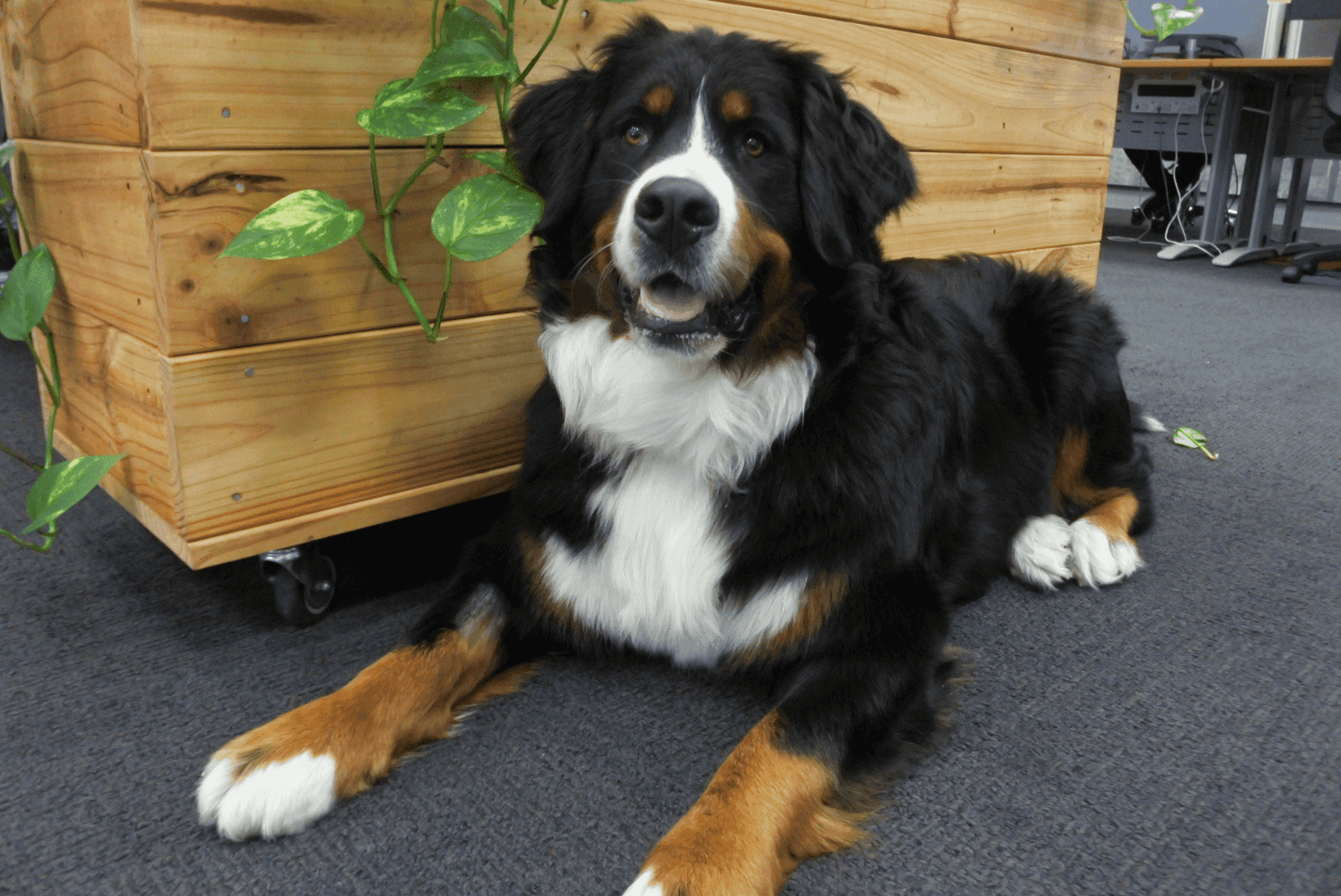
Dogs at work? For many, it's the dream. Luckily, having a pet in the workplace has become a lot more common in recent years. Gone are the days that we consider dogs to be a disruption to our work routines. In fact, dogs can make work better.
Petstock is one of many workplaces in New Zealand that is dog friendly all year round, and it makes a huge difference.
So, in celebration of International Take your Dog to Work Day on Friday 25 June, we want to remind everyone just how beneficial this can be. Not only to spark a bit (or a LOT) of joy in each day, but the benefits are reaped by customers, clients and the pets themselves.
Dogs help boost employee morale and wellbeing
It’s no surprise, and widely accepted, that dogs, and pets in general, help boost your mood and reduce stress. Dogs do so much for our mental and physical health, that it makes sense they can do this for more than just their owner. In a sometimes, fast-paced, high stress environment, the comforting power of dogs is heightened. Just patting a dog can calm an anxious worker, and therefore employers/and businesses now have trained therapy dogs entering workplaces on a regular basis. In especially high-stress workplaces, such as emergency call centres and emergency service offices, therapy dogs visit many times a week to lend a paw to those struggling, or those who just need a little extra support to get through the week. There are also therapy dogs who are not formally trained, but still assist humans in need, in a similar manner. Each one of these dogs, deserve many medals.
Assistance Dogs New Zealand Trust
If you ever needed more wholesome proof of just how good dogs can be for your mood and mental health, look no further than Assistance Dogs New Zealand Trust, who pair therapy dogs with people living with a disability. These dogs really do help calm and change the mood of their humans. The power of their presence is immense. James, who has been paired with therapy dog Mahe, knows this best. Due to his autism, it has been increasingly difficult for his mother Michelle to take him out and about for daily tasks.
"Mahe seems to have this calming influence over James. When they’re tethered together as a team, James is very happy to be with Mahe. Whereas if I were gripping his hand, he would be agitated and trying to get away. James has also learned that Mahe is the access to going places – he uses his communication device to ask for ‘Walk with Mahe’ when he wants to go out.”– Michelle, mother of James.
Dogs and other pets can be a highlight for your customers or clients
When you have a dog or pet friendly workplace, it not only makes the workplace more joyful and relaxed for team members, but also a whole lot more interesting for guests. Without a doubt, animal lovers can’t deny how a chance meeting with a cute animal can really change their day. Plus, it also makes for a great start way to engage with customers or clients.
Meet Bart – The store cat who turns heads
That’s right, Bart is a work-friendly feline. Depending on the setting and how it’s managed, other pets like cats can be integrated into the workplace. Bart currently resides at the Cambridge PETstock store, and has done so for years, after a pretty unique adoption story. Before PETstock acquired the site many years ago, Bart had already made his home within the fixtures of the existing store. Initially, he was a stray, who stole the hearts of both customers and employees. Now, he has officially been adopted by the store, and can be found snoozing the day away on a pile of dog beds.

It offers enrichment for your dog
While we all love the idea of dogs bringing us joy and emotional therapy, bringing dogs or pets into workplace can also offer them a unique and great opportunity for enrichment. When you bring a dog into a new environment, especially from a young age, they can become highly adaptable and engage in many new and rewarding experiences. If you have a dog friendly workplace that allows more than just one dog at a time, then you will also reap the benefits of wider socialisation for your dog or puppy.
Meet Delilah – The best-behaved office dog around (arguably)

Delilah is one of many resident dogs at the South Melbourne Petstock Support Office. She is also in the running for best behaved and most levelheaded. At just twelve weeks of age, this Bernese girl was brought into the office with owner Bec and adapted beautifully to the 9-5 life. For Bec, the benefits of bringing Delilah in so early in her life, has meant she is quite worldly and accustomed to all sorts of things.
“Introducing Delilah to the office at such a young age meant she was able to encounter a variety of different dogs, people and situations. Plus, it also helped fast-track and put into practice a lot of her early obedience training. We’re all incredibly lucky to have a dog-friendly workplace, and it means I have zero worries about bringing Delilah along wherever I go: cafes, bars, houses, she’s incredibly relaxed and well behaved,” says Bec.
While Delilah seems like the dream girl (and by all accounts is), it doesn’t mean accidents and challenges don’t occur, especially for a puppy. You need to be fully prepared to have a routine, supplies and support to manage the transition into the workplace.
“At the beginning I only brought her in one to two days a week, and on those days made sure I had minimal meetings and would mainly be at my desk. I also was prepared with a pen set-up, so she had her own little self-contained space where she felt comfortable. And like all puppies, she had a few more needs than adult dogs so I had a day bag to hold all the puppy essentials.”
All-in-all with preparation, consistency and a dog-friendly workplace, the whole arrangement has worked out great for both Bec and Delilah.
“Delilah is very comfortable at work now and is never a distraction from my work. In fact, having her at work makes both me and my coworkers happy, which I believe increases our productivity.”
Tips on bringing your dog to work
While we would all love to pack our dog up and let them run free in the workplace, the reality is, every dog is unique, and every dog-friendly workplace will have different rules or restrictions. To ensure a successful integration to workplace life for your pooch, it's important to take some tips from those who have done it before, and trainers who have seen it all before. Dog trainer, behaviourist and Pooches at Play host, Lara Shannon, has some handy tips of her own.
Lara's tips for bringing your dog to work:
“It’s really important your dog doesn’t feel overwhelmed or anxious during their first visit to your workplace, particularly if they are already a bit shy or nervous about meeting new people and potentially other dogs that may also be there,” says Lara.
- Ensure you make the introduction to this new environment a positive one. Use treats, praise, and pats to reinforce calm behaviour and create a positive association with the workplace and new people.
- If your dog is reactive (in excitement) then keep them on a leash and ask people to stay at a distance that does not cause your dog to be anxious. The signs of an anxious dog can include: licking of lips, flicking of tongue and yawning.
- Doing place or mat training, such as commanding ‘on your bed’ will be very helpful for your dog within a controlled environment like a workplace. You want your dog to be happy and comfortable staying in one place for periods of time.
- Long lasting chews and interactive toys are great for keeping your dog busy while they remain in their ‘place’.
- Make sure you know if other dogs will be in the office and if they may be reactive. The more information you know about possible four-legged colleagues the better. If you know another dog is reactive, you can then work out if you and your dog may need to sit somewhere else in the office for the day, or similar arrangement.
- Know your dog’s ‘critical distance’ – if they have one. Critical distance is the minimal distance in which your dog feels safe before reacting/ or becoming reactive. Ensure your colleagues understand your dog’s critical distance too.
Tips for future dog-friendly workplaces:
- Are there other pets or dogs in the office? Consider mandatory meet-and-greets to ensure dogs are compatible, before you allow lots of dogs in the office for the day.
- Encourage employee pets to be microchipped and have up to date registration.
- Ensure pets have appropriate collars and leads.
- Make use of warning sign for visitors who maybe allergic to or fearful of cats or dogs.
- Discourage owners and other employees to feed pets human food or left-over snacks from the tearoom, as this can cause them to become ill.
- Have a pet calendar or organised system to manage when pets will be in the office.
If you needed to know how beneficial dog-friendly or pet-friendly workplaces can be, here’s the proof. While it doesn’t work for all workplaces, it can work for many, and it should work for more. With the right attitude, planning and preparation, more pets can be welcomed into the workplace.
So, this Take Your Dog To Work Day (Friday 25 June), we hope to see more furry team members making their mark and spreading some joy.